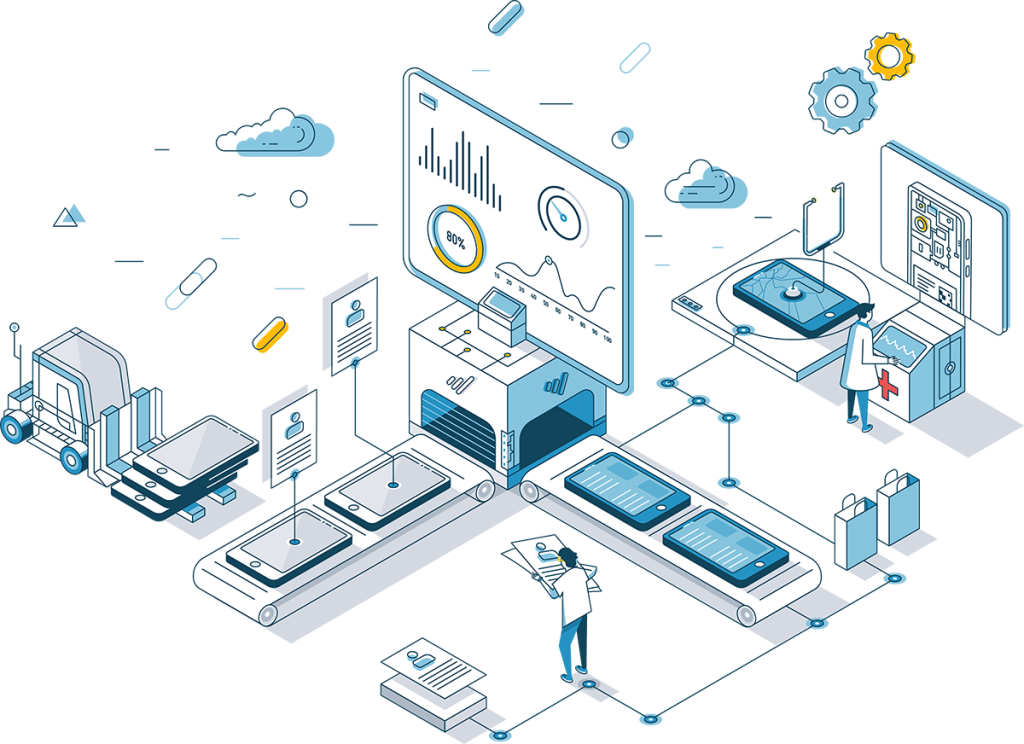In the constantly changing working environment of today the way we manage and maintaining devices has been modified. With the global shift towards hybrid and remote working arrangement, the traditional method of distributing laptops inside the workplace has now been replaced with an operationally more complex workflow known as Device Lifecycle Management (DLM). Managed Desktop Service (MDS) has become a crucial component of this new approach, helping to streamline the process of companies and improve users’ experience.

Device Lifecycle Management, often referred to as DLM, encompasses the entire journey of a device from acquisition to retirement. The process includes procurement, provisioning and maintenance along with end-of-life disposal. DLM in the old office was an easy procedure. The work from home environment has added layers and challenges.
In the current environment IT managers are struggling with assets and logistics at every stage of a device’s lifecycle. The need to address the demands of hybrid and remote workforces is the driving force behind this shift. Therefore, it has become essential that organizations adopt effective methods, and Managed Desktop Service has emerged as a game-changer.
Managed Desktop Service Remote Work Enabler
Managed Desktop Service, or MDS is a complete solution that simplifies the management of end-user devices. This service offers a holistic method of the provisioning of devices, their maintenance, and support, which makes it an invaluable asset for IT administrators. Here’s the way Managed Desktop Service is helping companies overcome the difficulties of remote work:
Enhancing End-User Experiences The primary objectives of Managed Desktop Service is to improve the user experience. It solves the common problems that remote workers face, such as delayed equipment installation, lengthy software updates along with lengthy repairs and replacements. MDS enhances employee satisfaction and productivity by ensuring employees are able to access the resources and tools they need at the time they are needed.
Managed Desktop Service streamlines device provisioning for remote employees. With MDS businesses can quickly distribute laptops and other equipment to new hires to ensure they are equipped with the equipment they require right from the beginning. This helps reduce the stress employees feel when they need to wait for their devices or delay their work.
Managed Desktop Service allows IT teams to manage software updates and patches more effectively. It allows you to schedule updates to be scheduled at a time that isn’t disruptive and ensures that employees will not be interrupted when doing their work. It also reduces the likelihood of interruptions for employees during video calls or important meetings.
Rapid Repairs and Replacements: For remote workplaces, it is important to replace or repair damaged devices as soon as is possible. Managed Desktop Service Providers often have strong support systems, which ensure that employees get prompt help when they have issues with their devices. This helps to minimize downtime, it also minimizes the chance of cybersecurity risks that arise from the use of personal or unsecured devices in emergencies.
Efficiency in cost: By outsourcing management of devices used by users to a Managed Desktop service provider, companies can optimize their costs. This option eliminates the need for internal staff to manage device management tasks, reduces the possibility of costly interruptions because of outdated equipment and enhances the overall cost effectiveness of managing the lifecycle of devices.
The impact of employee engagement on Turnover
The effectiveness and efficiency of the process for lifecycle management is directly impacted by employee engagement. People who are annoyed by difficulties with their device could become disengaged or even look for other opportunities. Inefficient DLM has a significant effect on the satisfaction of employees.
However, companies that invest in Managed Desktop Service (MDS) and effective Device Lifecycle Management can create a positive and engaging working environment. Employees with access top tools, who experience less disruption and receive prompt support for any issues are more likely than others to remain at their current workplace. This will reduce turnover and the recruitment and training expenses associated with it.
Mitigating Cybersecurity Risks
Organizations are putting cybersecurity on the top of their priority lists in this day and period of remote work. Employees could use personal devices or unprotected devices with no proper management. This can be a significant risk to the data and network security of the company.
Many Managed Desktop Service providers have strong security protocols for cybersecurity. They can ensure that all devices have up-to-date security patches and that data has been encrypted and protected. This proactive approach to cybersecurity can help organizations minimize risks and keep a safe remote working environment.
Conclusion
As the landscape of work continues to evolve the significance of efficient Device Lifecycle Management and Managed Desktop Service cannot be overstated. These services are essential to companies who want to be able to adapt to the new hybrid and remote working. Inspiring the user experience streamlining provisioning of devices, and enhancing security can help companies increase productivity, reduce staff turnover and create a stimulating and safe work environment. Incorporating these new changes in the management of devices isn’t just a response to the changes in technology; it’s a step towards a more efficient and productive future.